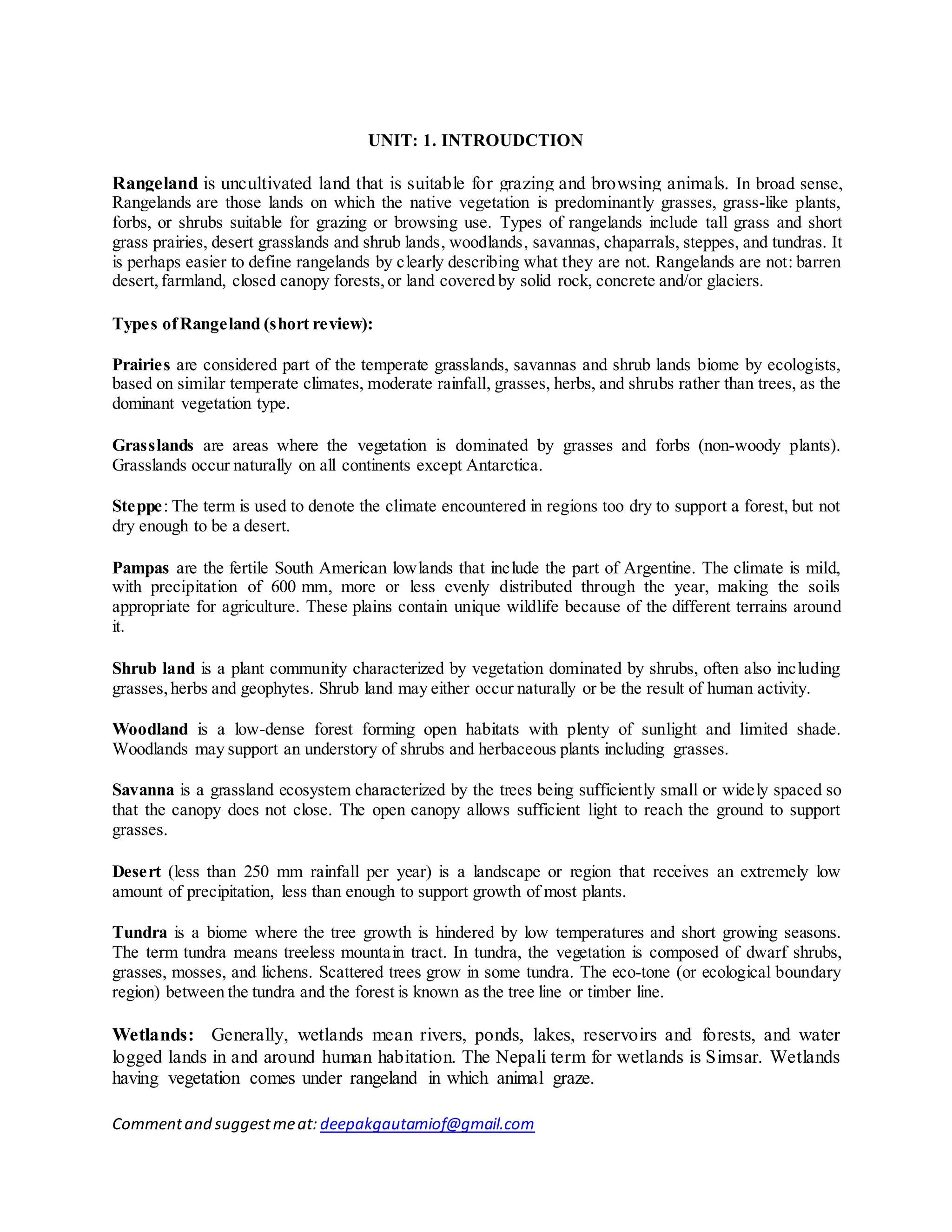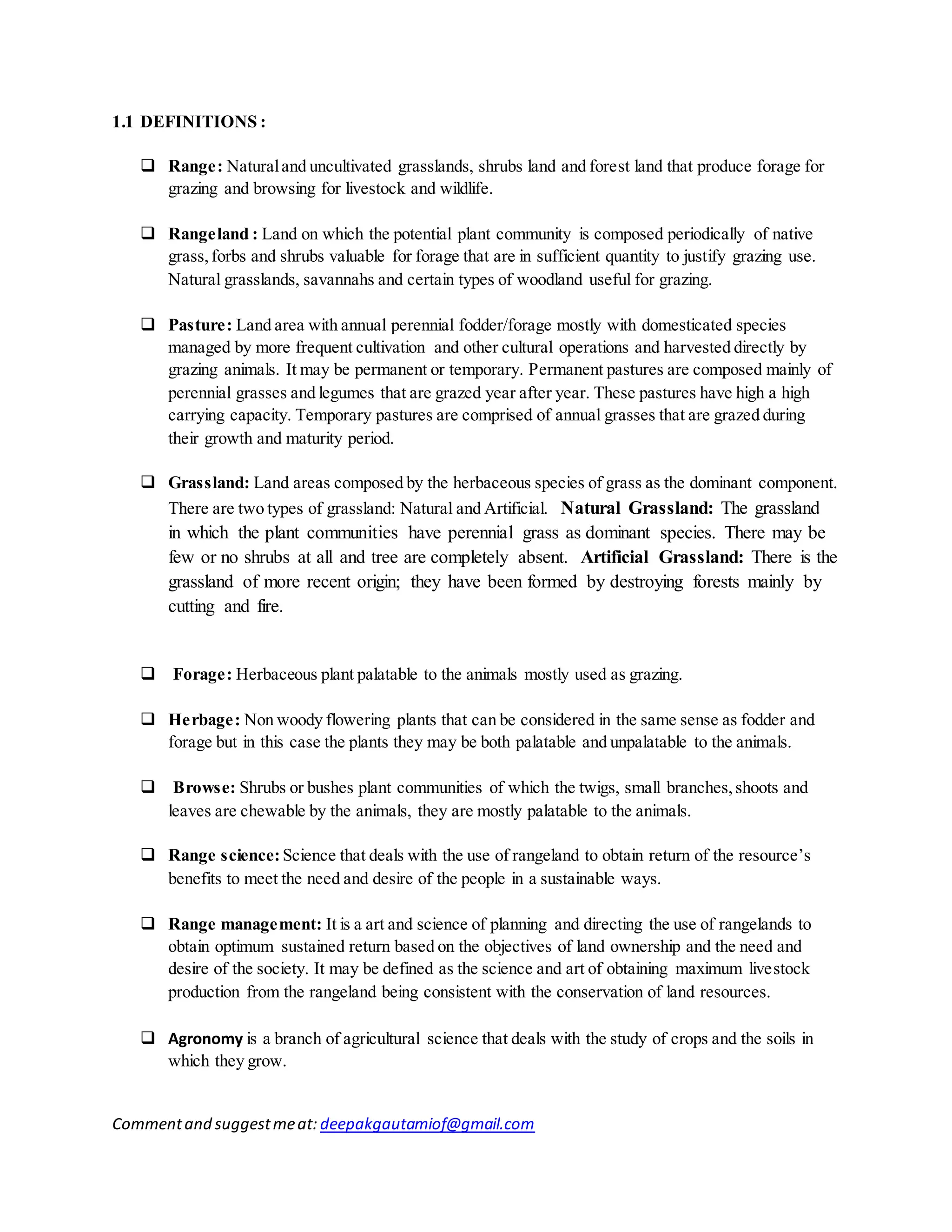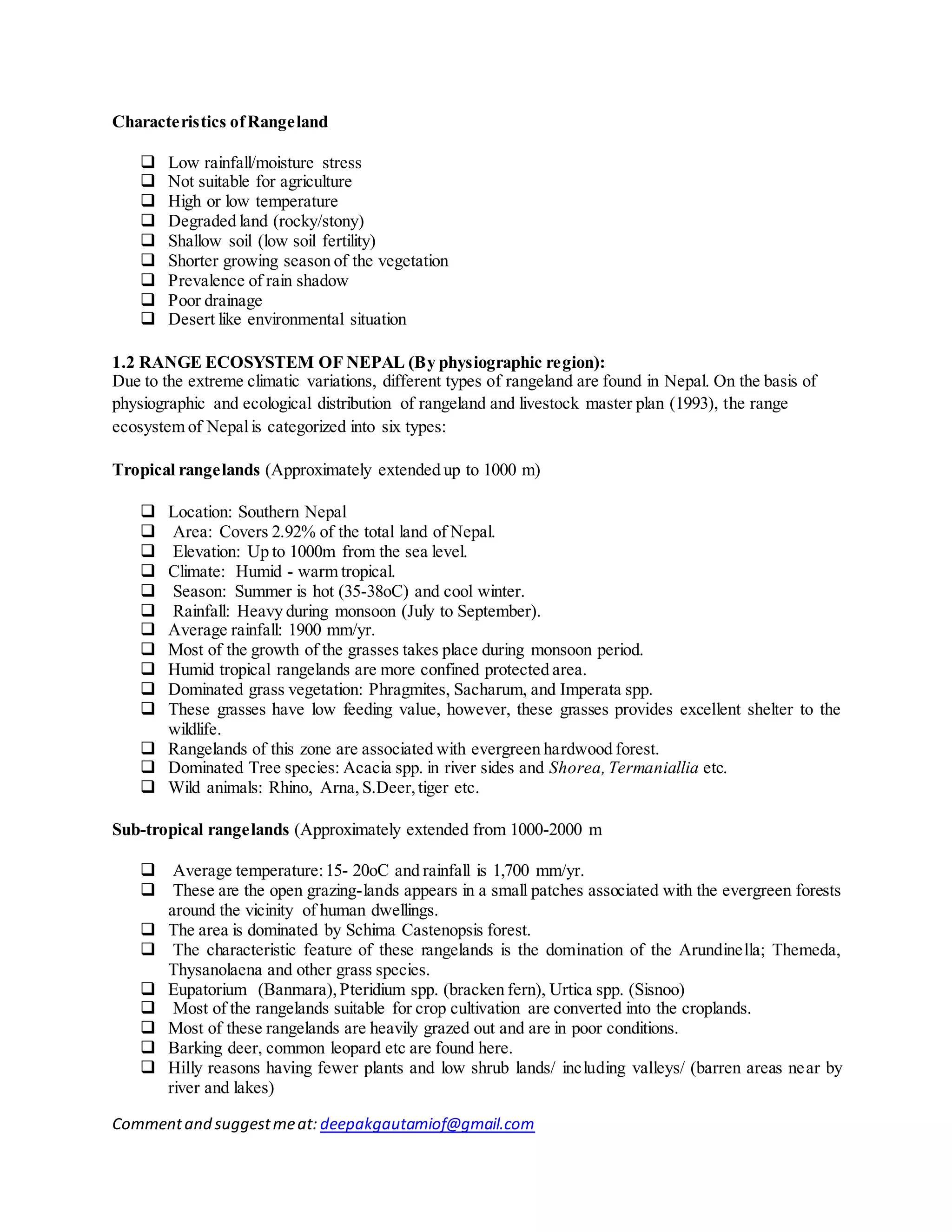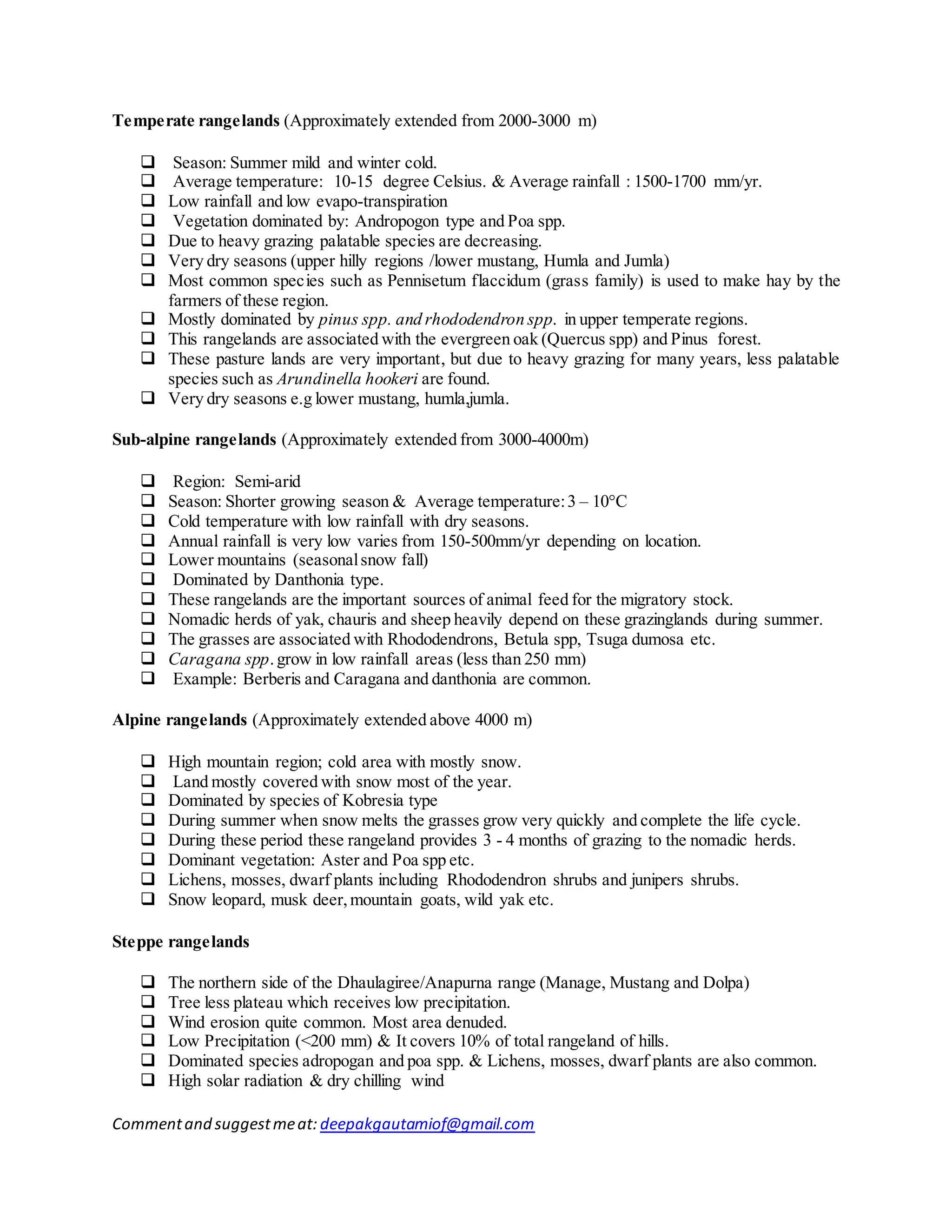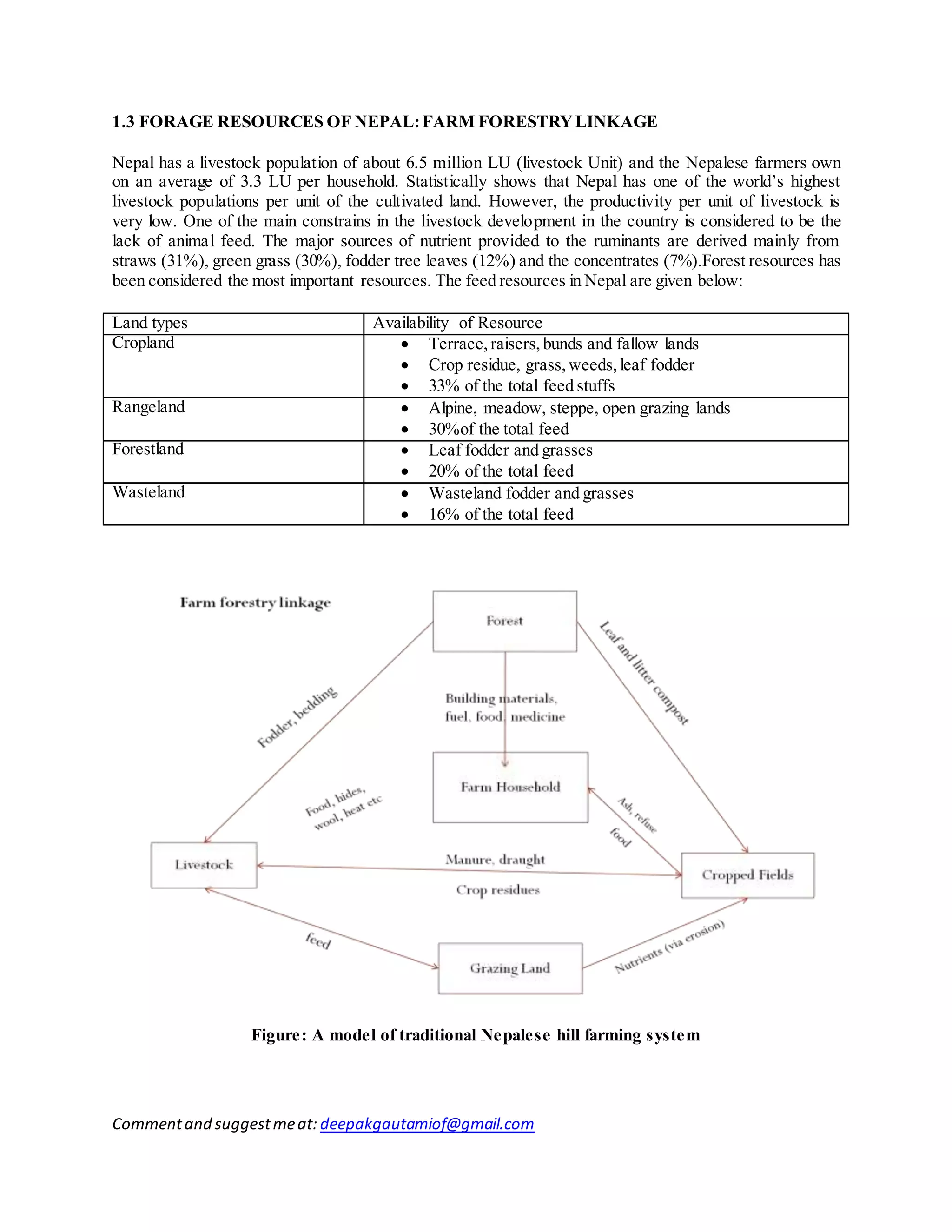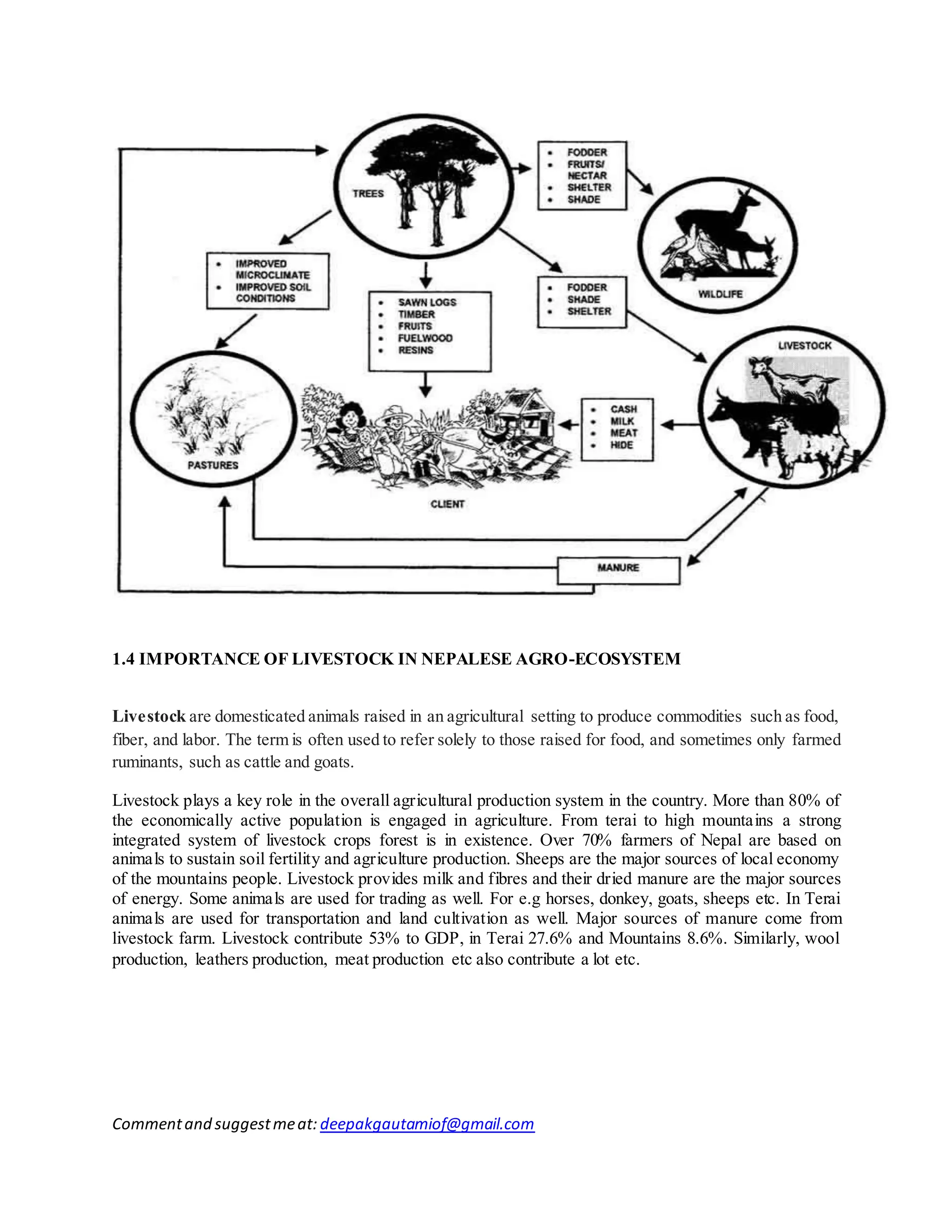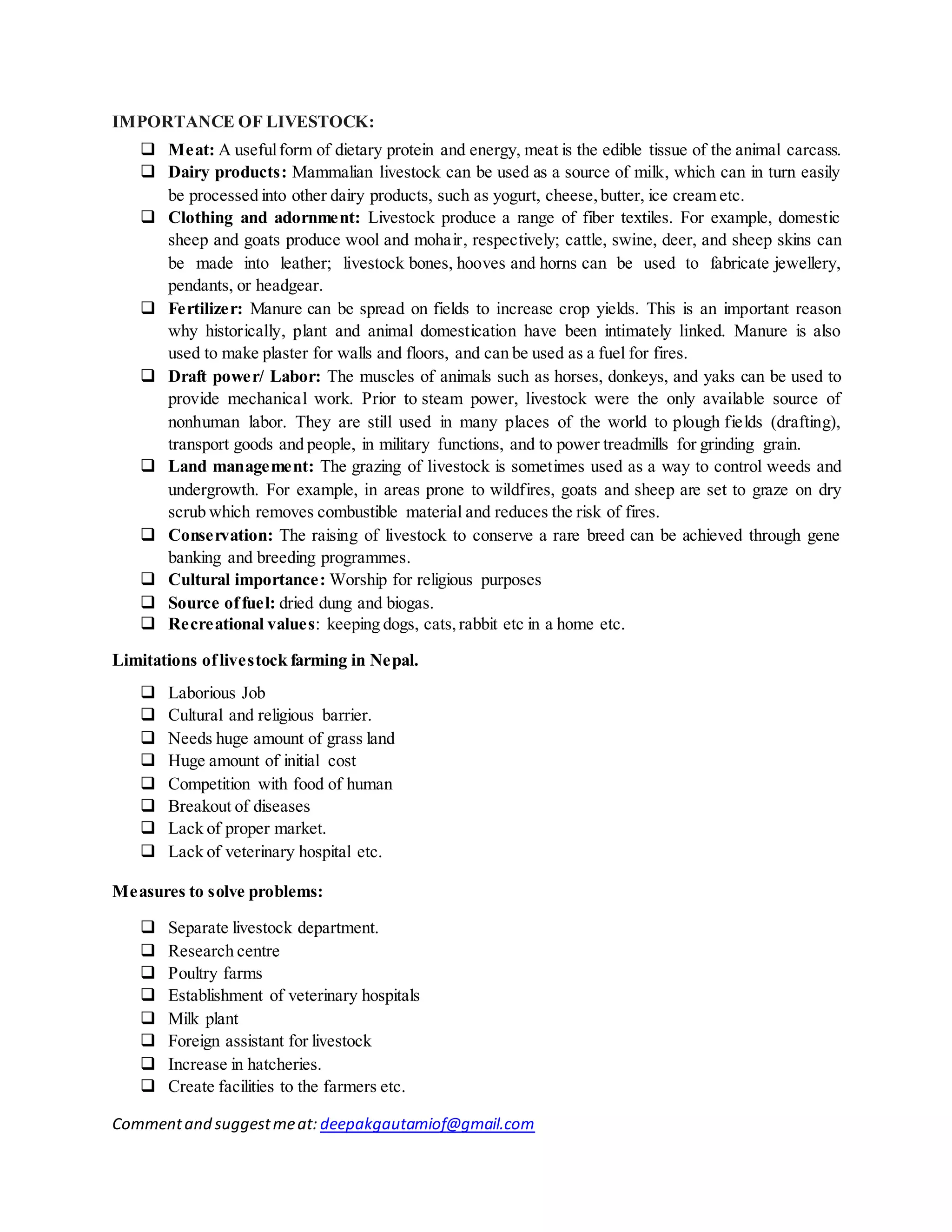The document discusses rangelands and their importance in Nepal. It defines rangelands as uncultivated lands suitable for grazing, comprising grasslands, shrublands, woodlands, and tundra. It categorizes Nepal's rangelands into 6 types based on elevation and climate: tropical, subtropical, temperate, subalpine, alpine, and steppe rangelands. Livestock depend heavily on rangelands for forage. Rangelands provide over 30% of livestock feed and support Nepal's agricultural economy and mountain communities. Proper rangeland management is important for sustainable livestock production and environmental conservation in Nepal.
